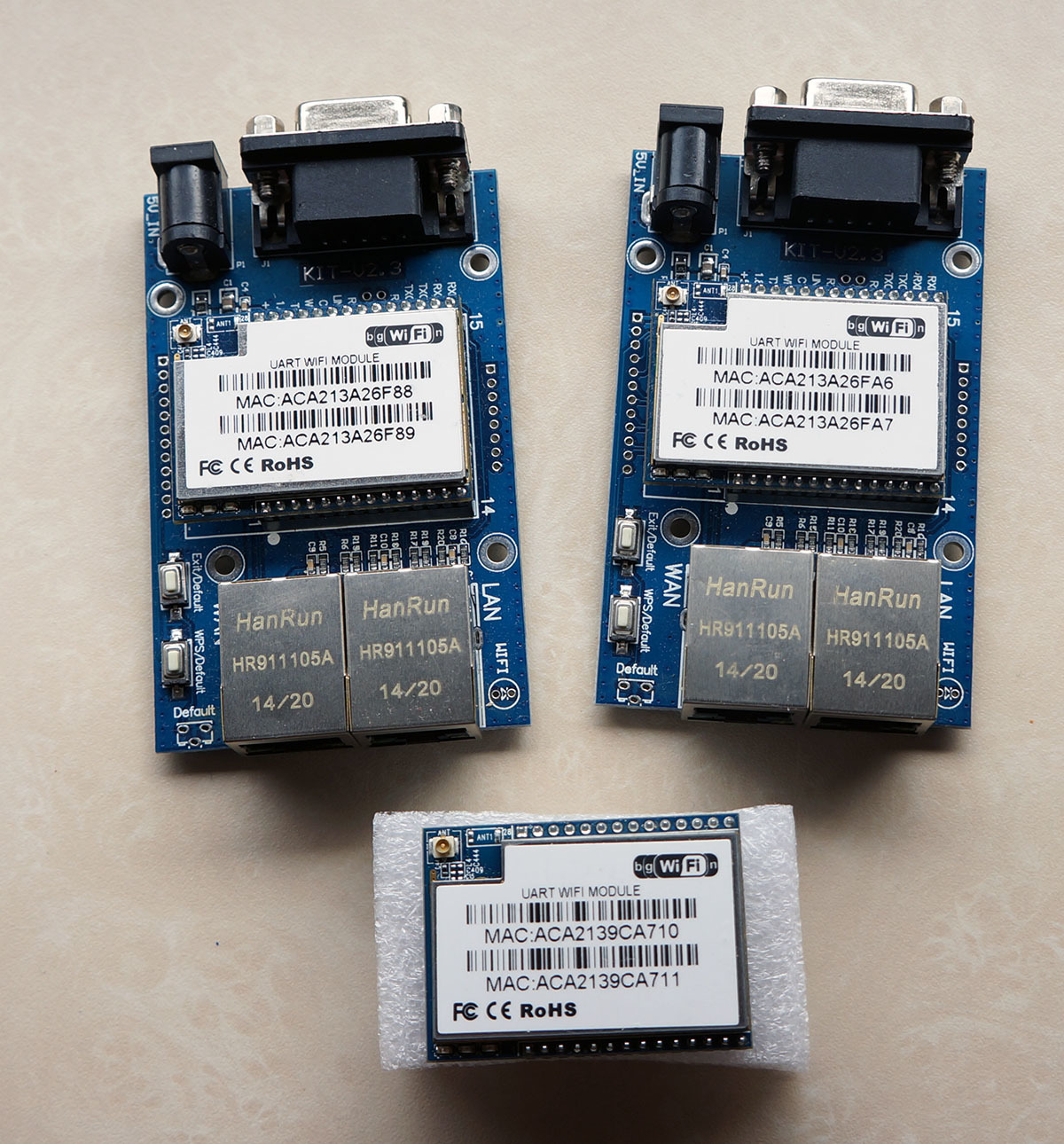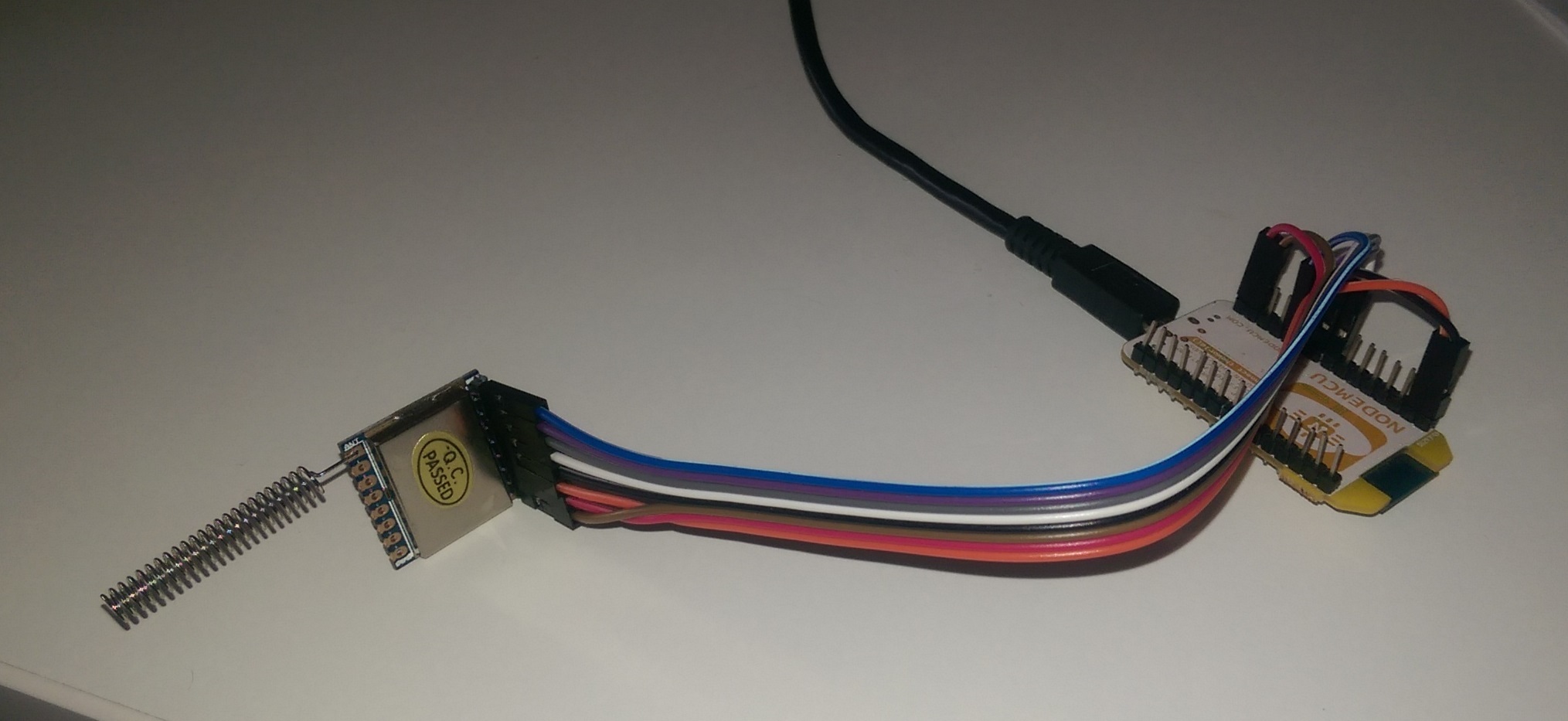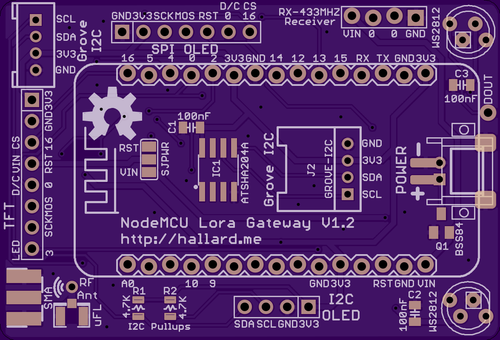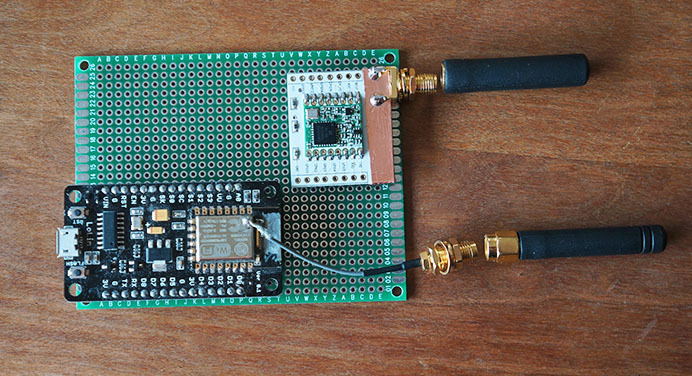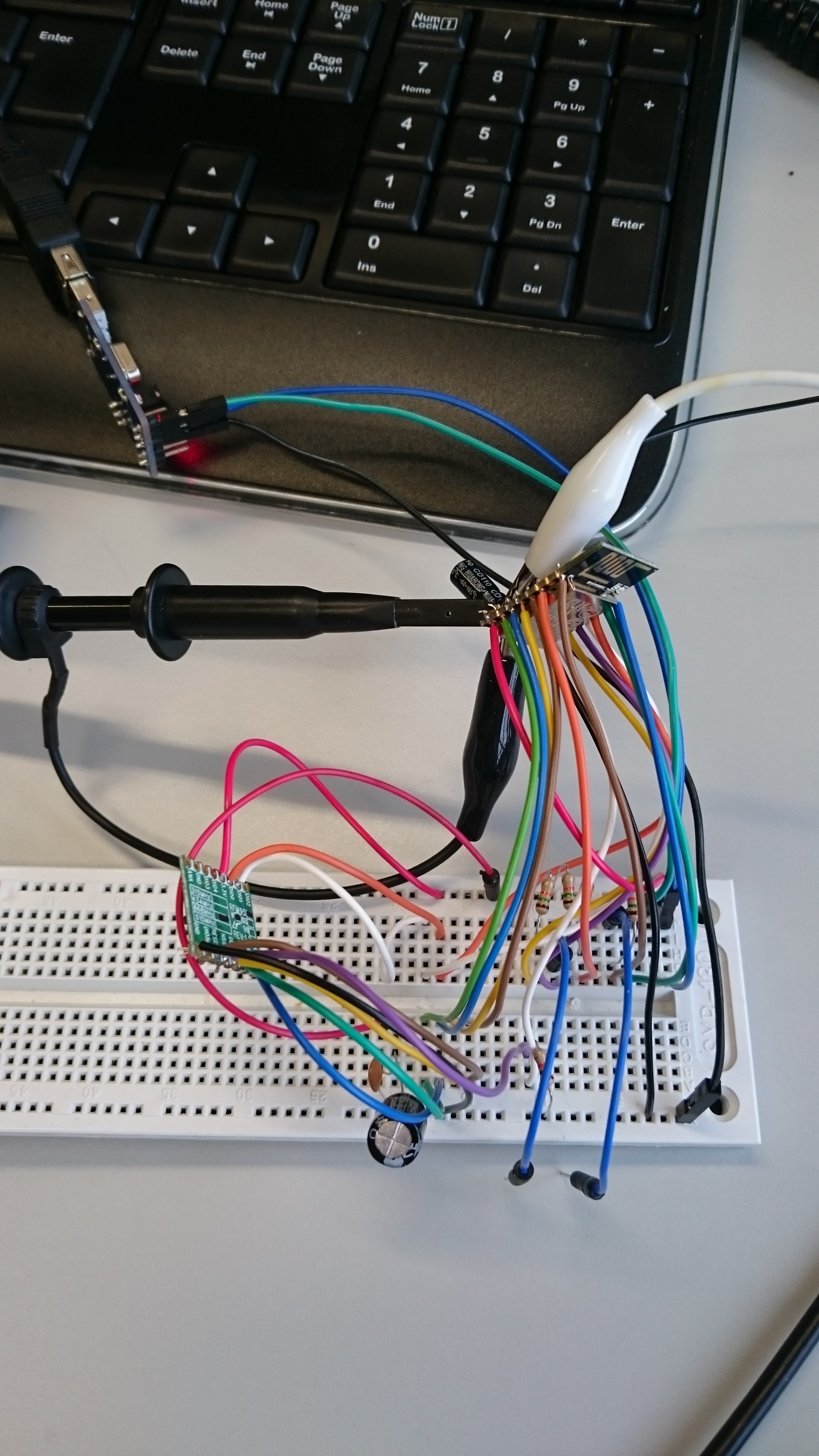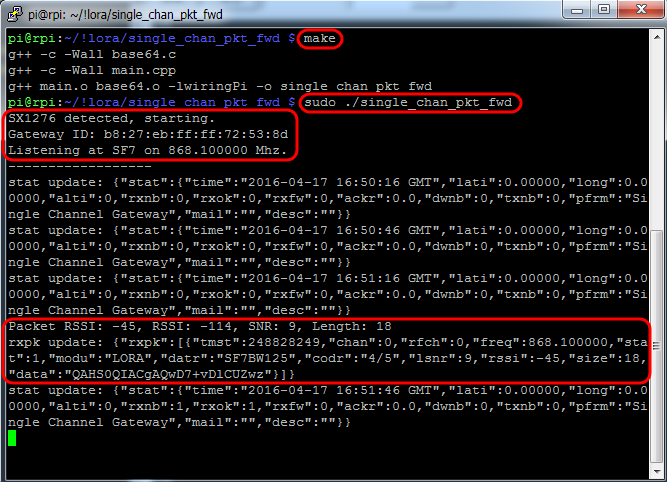I’m trying to use this gateway with the ESP node code from here, but can’t get it to work.
I have both the Gateway and node connected to a PC to see the console logs and they both look like they are running ok, just no message gets from the node to the gateway.
The node console output shows:
hal_init: ESP architecture
os_init() finished
LMIC_reet() finished
LMIC_setSession() finished
LMICsetAddrMode() finished
Init done
loop: Starting
Time: 0
Send, txCnhl: 0
Opmode check: ok, ready to send: Starting ESP8266 Dallas
Event EV_TXCOMPLETE, time: 5
Time: 120
Send, txCnhl: 0
Opmode check: ok, ready to send: Hello ESP8266
Event EV_TXCOMPLETE, time: 126
Time: 240
Send, txCnhl: 1
Opmode check: ok, ready to send: Hello ESP8266
Event EV_TXCOMPLETE, time: 246
The gateway console shows:
WiFi connect to: BTHub5-72W5
WiFi connected. local IP address: 192.168.1.119
Wlan Connected
Connecting to UDP
Connection successful
MAC: 18:fe:34:9b:1d:e0:
SX1276 detected, starting.
Gateway ID: 18FE34FFFF9B1DE0, Listening at SF7 on 868.10 Mhz.
time Friday 12:12:51
Admin Server started on port 8080
stat update: <221> {“stat”:{“time”:“2016-4-15 12:13:14 CET",“lati”:51.586742,“long”:-0.102353,“alti”:25,“rxnb”:0,“rxok”:0,“rxfw”:0,“ackr”:0.0,“dwnb”:0,“txnb”:0,“pfrm”:“ESP8266”,“mail”:"ant.elder@gmail.com”,“desc”:“ESP Gateway”}}
Received packet of size 4 From 54.72.145.119, port 1700, Contents: 1:2D:CF:1:
stat update: <221> {“stat”:{“time”:“2016-4-15 12:13:44 CET",“lati”:51.586742,“long”:-0.102353,“alti”:25,“rxnb”:0,“rxok”:0,“rxfw”:0,“ackr”:0.0,“dwnb”:0,“txnb”:0,“pfrm”:“ESP8266”,“mail”:"ant.elder@gmail.com”,“desc”:“ESP Gateway”}}
Received packet of size 4 From 54.72.145.119, port 1700, Contents: 1:46:29:1:
[…]
And in the web interface it shows 0 Packages Received.
Any tips on how to debug whats wrong? Would the consoles be showing all that if i had a wire connected wrong somewhere on one of the SX1276’s?
(Also bit of a newbie at TTN so is the right place to be asking for help, or if not where?)
